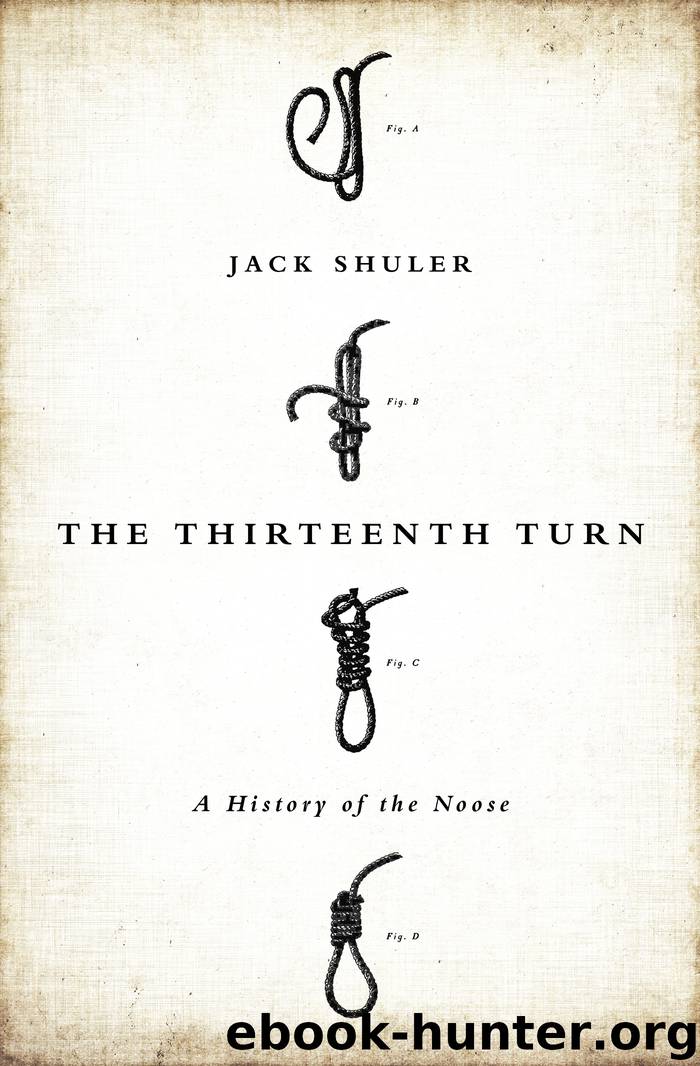Thirteenth Turn by Shuler Jack;

Author:Shuler, Jack;
Language: eng
Format: epub
Publisher: PublicAffairs
Published: 2014-06-15T16:00:00+00:00
Chapter 9
A Story of Hands:
An Early Twentieth-Century
Lynching in the American Midwest
In the first few decades of the twentieth century more Americans were visibly fighting for an end to the lynching epidemic: activists like Mary McLeod Bethune and Walter White continued the work that Ida B. Wells-Barnett had begun, actively pursuing national legislation to protect Americans from vigilante justice. They were armed with a growing body of scholarship aimed at trying to understand and offer solutions for this horrific phenomenon.1 One of their greatest weapons was to record and tell lynching stories. In 1937 one such story was read into the record of the US House of Representatives amidst a floor debate about an antilynching bill.2 The story was horrific: two African American men who had pleaded not guilty to a murder were taken from local law enforcement by a mob of some two hundred people, tied to a tree, tortured with a blow torch, and then shot in Duck Hill, Mississippi. And yet that bill did not pass.
By the beginning of World War II, though, there were fewer and fewer lynchings. Some have suggested lynching died out because of a combination of opposition in the press, the rise of advocacy organizations (like the white-led Association of Southern Women for the Prevention of Lynching), the New Deal, radio-dispatched law enforcement, African American resistance, and migration.3 But by no means did the practice disappear completely. And curiously, lynching in the first half of the twentieth century was in some ways more visible, as technologies developed that shaped how and where people were killed. Railroad tracks were used to batter down jail doors. People were dragged behind automobiles. People were hanged from telephone and telegraph poles.
Most importantly, though, technology made it easier to document a lynching. This was the heyday of the lynching photograph and the lynching postcard. Indeed, the brazenness of the lynchers and their supporters, who often look directly into the camera lens, is captured for posterity in photo after photo from this era, some of which became postcards and were mailed around the United States.
The knots, the nooses, tied by the hands of murderers stand out in these images in a telling variety of forms. In some cases it seems like the victim was killed and then hanged; lynch victims were often shot, burned, or beaten before being strung up for public display. In those cases, it seems, the knots are quick, haphazard, inelegant, and utilitarian. But this is the first time I begin to see an abundance of hangman’s knots, though not always. For example, in the ninety-eight lynching images in Without Sanctuary, a book based on the lynching photograph collection of James Allen and John Littlefield, I count about thirty hangman’s knots (Knot #1119) or attempts at forming them. I’m reminded of Don Burrhus’s assertion that the knot is a tuxedo, an elegant knot to tie for killing someone. It’s clear in many of these lynching photographs that the kind of noose used doesn’t really matter.
One of the hangman’s knots is in an image of Leo Frank, a Jewish man lynched by a Georgia mob in 1915.
Download
This site does not store any files on its server. We only index and link to content provided by other sites. Please contact the content providers to delete copyright contents if any and email us, we'll remove relevant links or contents immediately.
| African-American Studies | Asian American Studies |
| Disabled | Ethnic Studies |
| Hispanic American Studies | LGBT |
| Minority Studies | Native American Studies |
Cecilia; Or, Memoirs of an Heiress — Volume 1 by Fanny Burney(31443)
Cecilia; Or, Memoirs of an Heiress — Volume 3 by Fanny Burney(31034)
Cecilia; Or, Memoirs of an Heiress — Volume 2 by Fanny Burney(30981)
The Great Music City by Andrea Baker(22890)
We're Going to Need More Wine by Gabrielle Union(18123)
Bombshells: Glamour Girls of a Lifetime by Sullivan Steve(13157)
Pimp by Iceberg Slim(12998)
All the Missing Girls by Megan Miranda(12833)
Fifty Shades Freed by E L James(12490)
Talking to Strangers by Malcolm Gladwell(11983)
Norse Mythology by Gaiman Neil(11958)
Crazy Rich Asians by Kevin Kwan(8409)
Mindhunter: Inside the FBI's Elite Serial Crime Unit by John E. Douglas & Mark Olshaker(7896)
The Lost Art of Listening by Michael P. Nichols(6530)
Enlightenment Now: The Case for Reason, Science, Humanism, and Progress by Steven Pinker(6447)
Bad Blood by John Carreyrou(5816)
The Four Agreements by Don Miguel Ruiz(5577)
Weapons of Math Destruction by Cathy O'Neil(5094)
We Need to Talk by Celeste Headlee(4920)
